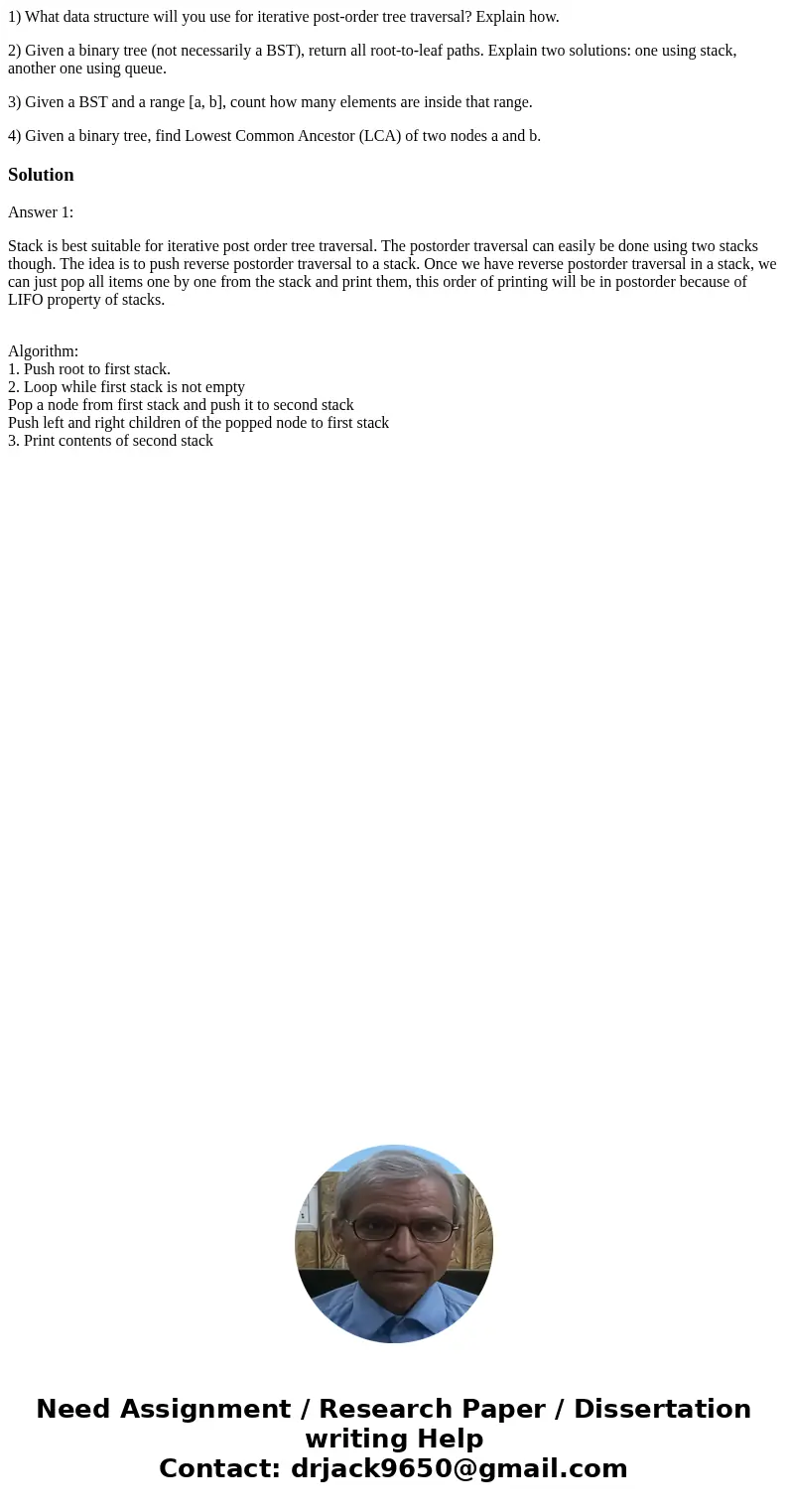1 What data structure will you use for iterative postorder t
1) What data structure will you use for iterative post-order tree traversal? Explain how.
2) Given a binary tree (not necessarily a BST), return all root-to-leaf paths. Explain two solutions: one using stack, another one using queue.
3) Given a BST and a range [a, b], count how many elements are inside that range.
4) Given a binary tree, find Lowest Common Ancestor (LCA) of two nodes a and b.
Solution
Answer 1:
Stack is best suitable for iterative post order tree traversal. The postorder traversal can easily be done using two stacks though. The idea is to push reverse postorder traversal to a stack. Once we have reverse postorder traversal in a stack, we can just pop all items one by one from the stack and print them, this order of printing will be in postorder because of LIFO property of stacks.
Algorithm:
1. Push root to first stack.
2. Loop while first stack is not empty
Pop a node from first stack and push it to second stack
Push left and right children of the popped node to first stack
3. Print contents of second stack

 Homework Sourse
Homework Sourse